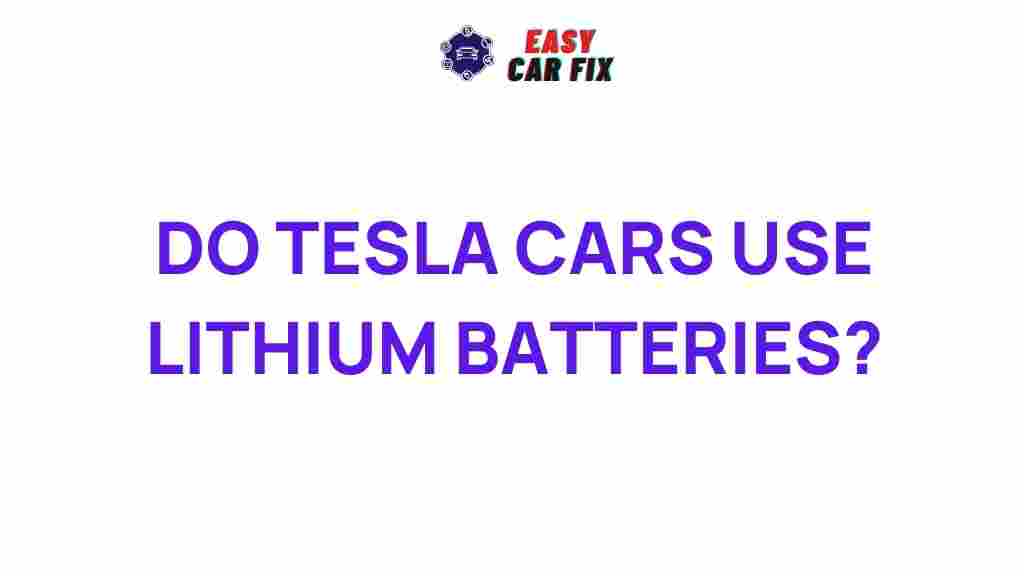Unveiling the Power Source: The Truth Behind Tesla Cars’ Lithium Batteries
In recent years, Tesla cars have revolutionized the automotive industry, heralding a new era of electric vehicles (EVs) powered by advanced lithium batteries. As the world shifts towards sustainable energy solutions, understanding the technology behind these batteries is crucial. This article delves into the intricacies of Tesla’s lithium batteries, exploring their innovation, performance, and environmental impact. Whether you’re a potential EV buyer or simply curious about sustainable technology, this comprehensive guide will provide you with the knowledge you need.
The Basics of Tesla Cars and Their Lithium Batteries
Tesla cars are at the forefront of the electric vehicle movement. Unlike traditional vehicles that rely on internal combustion engines, Tesla’s lineup is powered by cutting-edge lithium batteries. These batteries are essential for the performance and sustainability of Tesla’s vehicles. Here’s a brief overview of how they work:
- Composition: Tesla’s lithium batteries are primarily composed of lithium-ion cells, which provide high energy density and longevity.
- Charging: These batteries can be charged at home or using Tesla’s extensive Supercharger network, making it convenient for users.
- Performance: The efficiency of lithium batteries enables Tesla cars to achieve impressive ranges on a single charge, often exceeding 300 miles.
Understanding Lithium Batteries in Tesla Cars
Lithium batteries are the heart of Tesla cars, and their technology is continually evolving. Here are key aspects to consider:
1. Energy Density
Energy density refers to the amount of energy stored in a given volume. Tesla’s lithium batteries boast high energy density, allowing for longer ranges, which is a crucial factor for consumers considering electric vehicles.
2. Thermal Management
Temperature control is vital for battery performance and longevity. Tesla employs advanced thermal management systems to keep the batteries within optimal temperature ranges, enhancing safety and efficiency.
3. Battery Life and Warranty
One of the most common concerns about electric vehicles is battery lifespan. Tesla offers warranties that cover its lithium batteries for up to 8 years or 100,000 to 150,000 miles, depending on the model. This assurance gives potential buyers confidence in the longevity of their investment.
Step-by-Step Process of How Tesla Lithium Batteries Work
To better understand the technology behind Tesla cars, let’s break down the process of how lithium batteries function:
- Charging: When you connect your Tesla to a power source, electricity flows into the lithium batteries, causing lithium ions to move from the positive electrode (cathode) to the negative electrode (anode).
- Discharging: When you drive, the reverse process occurs. Lithium ions move back to the cathode, releasing energy that powers the electric motor.
- Battery Management System (BMS): Tesla’s BMS monitors the battery’s voltage, temperature, and state of charge to optimize performance and ensure safety.
Innovation in Tesla’s Lithium Battery Technology
Innovation is a driving force behind Tesla’s success. The company consistently invests in research and development to enhance its lithium battery technology. Here are some key innovations:
- 4680 Battery Cells: Tesla has introduced a new cell design that promises to reduce costs, increase range, and improve performance.
- Battery Recycling: Tesla is committed to sustainability, and its battery recycling initiatives aim to minimize waste and recover valuable materials.
- Supercharger Technology: Tesla’s Supercharger network is continually expanding, providing faster charging solutions and promoting the adoption of electric vehicles.
The Environmental Impact of Tesla Cars and Lithium Batteries
While Tesla cars represent a significant step towards sustainable energy, it is essential to consider their environmental impact:
Positive Impacts
- Reduced Emissions: Electric vehicles produce zero tailpipe emissions, contributing to cleaner air and lower greenhouse gas emissions.
- Renewable Energy Integration: Tesla encourages the use of solar energy to charge its vehicles, further reducing reliance on fossil fuels.
Challenges
- Raw Material Extraction: The mining of lithium and other materials for batteries can have negative environmental consequences if not managed responsibly.
- Battery Disposal: Proper recycling and disposal of lithium batteries are crucial to minimizing environmental harm.
Troubleshooting Tips for Tesla Owners
While Tesla cars are designed for reliability, owners may encounter some common issues related to lithium batteries:
- Slow Charging: If your Tesla is charging slowly, ensure that you are using a compatible charger and that the charging port is clean.
- Reduced Range: Factors such as temperature, driving habits, and the age of the battery can affect range. Consider adjusting your driving style or charging habits.
- Battery Health Monitoring: Use the Tesla app to monitor battery health and schedule maintenance as needed.
Conclusion: The Future of Tesla Cars and Lithium Batteries
Tesla cars represent a significant leap in automotive technology, combining innovation with sustainability through their advanced lithium batteries. As we continue to explore sustainable energy solutions, understanding these power sources will become increasingly vital. With ongoing advancements in battery technology and a commitment to reducing environmental impact, Tesla is set to remain a leader in the electric vehicle market.
For more insights into electric vehicles and sustainable energy, check out this informative guide. If you’re interested in exploring more about Tesla’s innovations, visit their official website here.
By embracing technology and innovation, we can look forward to a future where electric vehicles play a central role in our transportation systems, contributing to a cleaner, greener planet.
This article is in the category SmartBuy and created by EasyCarFix Team
